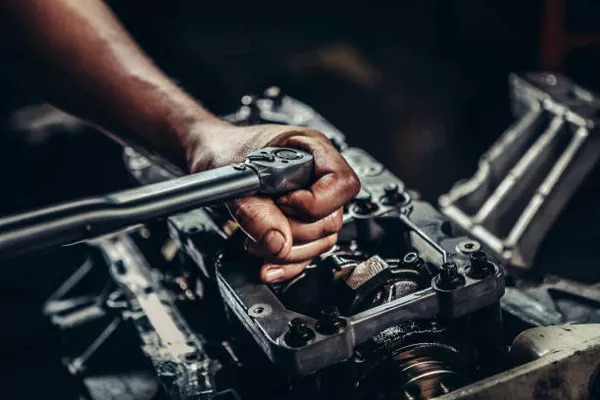Air compressors play a crucial role in various industries, from manufacturing and construction to automotive repair and home improvement. These versatile machines convert power into potential energy stored in pressurized air, which is then used to power tools, inflate tires, and perform a multitude of other tasks. To grasp their functionality fully, it’s essential to understand the various components that make up an air compressor and how each contributes to its overall operation and efficiency.
1. Power Source and Motor
At the heart of every air compressor lies its power source, typically an electric motor or a gasoline/diesel engine. The motor’s capacity determines the compressor’s horsepower (HP) rating, which directly influences its ability to produce compressed air at various pressures and volumes. Electric motors are common in stationary compressors, offering reliability and efficiency, while gasoline or diesel engines are preferred for portable models due to their mobility.
2. Pump Assembly
The pump assembly is the core component responsible for compressing air. It consists of several key elements:
Cylinder: Where air is compressed using reciprocating pistons or rotating screws.
Pistons or Rotors: These move within the cylinder to compress the air. Piston-driven compressors are common in smaller, portable models, while rotary screw compressors are used in larger industrial applications for continuous operation.
Valves: Intake and discharge valves control the flow of air into and out of the compression chamber, ensuring efficient operation and pressure regulation.
3. Tank
The compressed air generated by the pump is stored in a tank, which acts as a reservoir. Tanks are typically made of steel and come in various sizes, ranging from small portable units to large stationary tanks used in industrial settings. The tank’s capacity dictates how much compressed air can be stored and used before the compressor needs to cycle on again to refill the tank.
4. Pressure Switch and Regulator
To maintain a consistent and safe operating pressure, air compressors are equipped with a pressure switch and regulator:
Pressure Switch: Monitors the air tank’s pressure levels. When the pressure drops below a set point (cut-in pressure), the switch activates the motor or engine to start the compressor. It also shuts off the motor when the pressure reaches the cut-out pressure.
Regulator: Controls the air pressure delivered to connected tools or systems. It allows users to adjust the output pressure to suit specific requirements, ensuring optimal performance and safety.
5. Cooling System
Compression generates heat, so air compressors incorporate cooling systems to prevent overheating and ensure continuous operation:
Air-cooled: Most smaller compressors use fans to circulate air around the pump and motor to dissipate heat.
Water-cooled: Larger industrial compressors may use water-cooling systems for more effective heat dissipation, especially in high-demand applications.
6. Filters and Lubrication System
Clean, dry air is essential for the longevity of pneumatic tools and equipment, necessitating the inclusion of:
Air Filters: Remove moisture, oil contaminants, and particulates from the compressed air to prevent damage to tools and ensure consistent performance.
Lubrication System: Provides lubrication to moving parts within the compressor (such as pistons and bearings) to minimize friction and wear, extending the compressor’s lifespan and maintaining efficiency.
7. Control Panel and Gauges
Modern air compressors feature control panels equipped with gauges and controls for monitoring and adjusting various parameters:
Pressure Gauges: Display the tank and outlet pressures, allowing operators to monitor performance and adjust settings as needed.
Control Knobs and Switches: Enable users to start and stop the compressor, adjust pressure settings, and activate safety features.
8. Safety Features
Safety is paramount when operating air compressors. Key safety features include:
Pressure Relief Valve: Automatically releases excess pressure from the tank to prevent over-pressurization and potential hazards.
Automatic Shutdown: Activates in case of overheating, low oil levels (for lubricated compressors), or other critical failures to prevent damage and ensure operator safety.
9. Accessories and Connections
Air compressors are often equipped with various accessories and connection points:
Air Outlets: Where hoses or pipes connect to deliver compressed air to tools or systems.
Drain Valves: Used to release moisture and condensate that collects in the tank to prevent corrosion and maintain air quality.
Wheels and Handles: Found on portable models for easy transportation and maneuverability.
10. Maintenance Considerations
Regular maintenance is crucial to ensure the longevity and efficiency of an air compressor:
Oil Changes: Required for lubricated compressors to maintain proper lubrication and prevent wear.
Filter Replacement: Ensures clean, dry air and prevents contaminants from damaging tools and equipment.
Inspections: Checking for leaks, worn components, and proper operation of safety features.
See Also THE COST OF SMALL AIR COMPRESSORS
Conclusion
Understanding the various components of an air compressor is essential for choosing the right model for specific applications, maintaining it effectively, and ensuring safe and efficient operation. Whether for home use, construction sites, or industrial settings, knowing how each part contributes to overall functionality empowers users to maximize performance and longevity while minimizing downtime and repair costs. By mastering these fundamentals, individuals and businesses can harness the power of compressed air to enhance productivity and achieve their operational goals reliably and efficiently.

